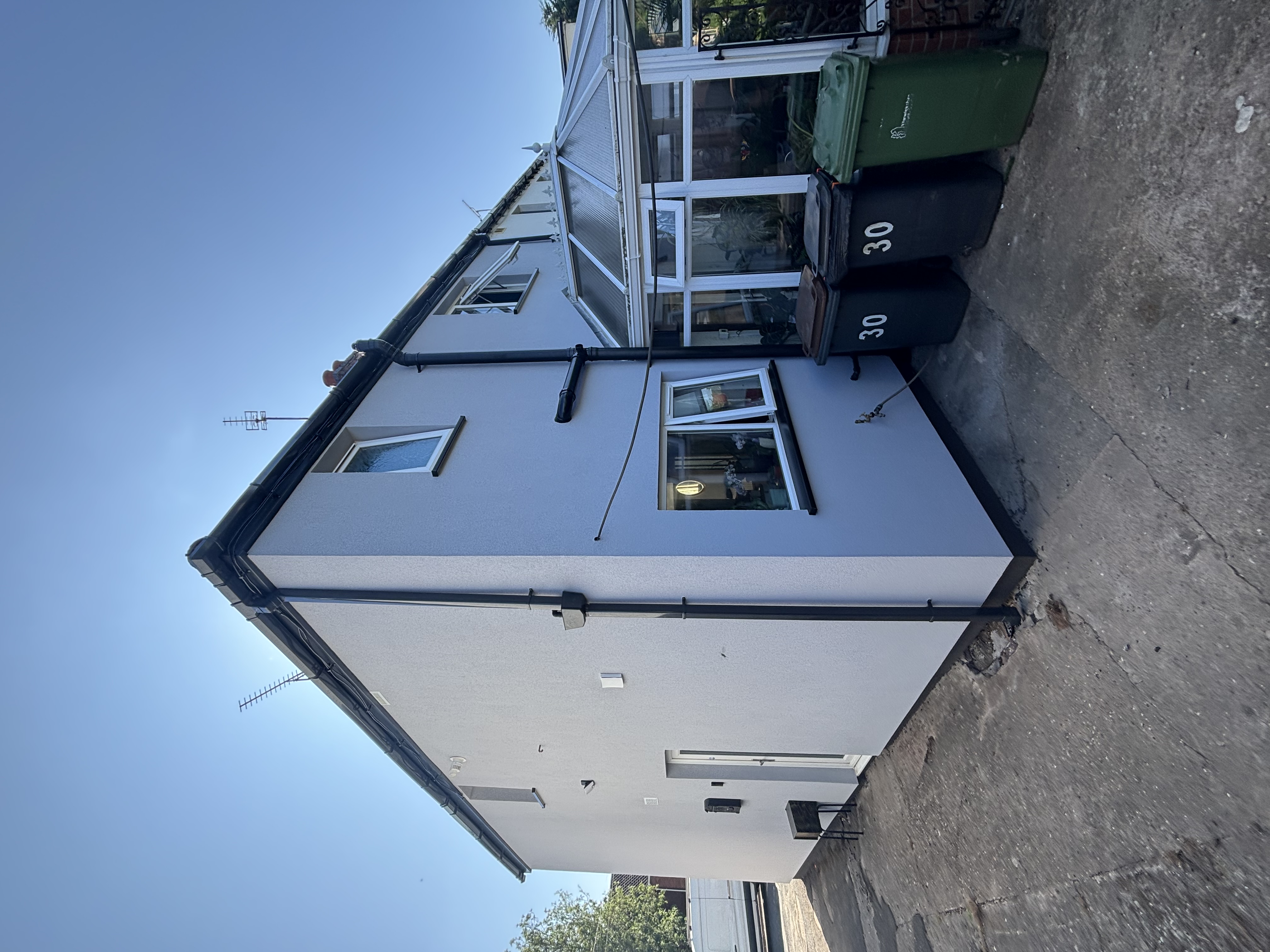
Can External Wall Insulation Stop Mould? Mould is something we’re all likely to encounter at some point, especially during the damp autumn and winter seasons. It can be challenging to tackle mould in our homes, causing not just unsightly patches but also having a profound impact on your health and that of your family, posing serious risks that should not be underestimated.
This article explores the causes of mould, the role of condensation, and preventative measures. We’ll particularly focus on how external wall insulation can be a powerful tool in combating mould issues.
Mould stems from excess moisture, originating from various sources such as leaks, condensation, or even the drying process of building materials in new homes. Identifying and addressing the root cause of dampness is crucial in combating mould, which can grow quickly on damp surfaces, deteriorating walls, furniture, and health.
Excessive moisture inside your home is a primary contributor to dampness and indoor mould growth. This moisture can originate from activities such as cooking, drying clothes, or using the bath or shower. Additionally, dampness can result from structural issues or rising damp from the ground, as well as from flooding or pipe leaks. Mould problems, stemming from condensation, rising or penetrating damp, are multifaceted. Issues range from structural defects like cracked tiles or damaged gutters to environmental factors such as humidity. Recognising these underlying causes is the first step towards effective mould remediation.
Black Mould: Often referred to as “toxic mould,” this variety is particularly hazardous and requires immediate attention. It flourishes in constantly moist environments, commonly appearing following water damage or in areas that remain damp over time.
Orange Mould: This mould is typically seen in places with abundant moisture and organic matter. It frequently occurs in kitchens and bathrooms, as well as on damp textiles or carpets.
Green Mould: Known for its affinity for soft furnishings and fabrics, green mould can often be found on these materials.
Brown or Yellow Mould: This mould variety is usually observed on walls and ceilings, especially beneath aged wallpaper.

Mould, a type of fungus, thrives in moist conditions, often in kitchens and bathrooms with poor ventilation. It's harmful to health, especially for those with respiratory issues, allergies, or weakened immune systems. Inhaling or touching mould spores may cause an allergic reaction, such as sneezing, a runny nose, red eyes and skin rash. Moulds can also cause asthma attacks.
Tackling mould effectively involves preventative strategies like enhancing ventilation, managing indoor humidity, and ensuring proper drainage. In this regard, External Wall Insulation (EWI) becomes crucial. The following section of this article will delve into how EWI serves as an effective measure against mould problems.

EWI acts as a shield, preventing walls from becoming too cold and thus minimising the likelihood of condensation and mould formation. It's crucial for the installation to facilitate the escape of moisture to prevent the build-up of dampness. For buildings with solid walls, particularly those of historical significance or within conservation areas, breathable EWI is a sustainable, health-conscious choice. Additionally, external wall insulation offers the added advantage of being waterproof. Installed on the building's exterior, the materials used must endure the British weather, often consisting of resistant, impermeable materials that form a waterproof barrier. This waterproof feature is key in external wall insulation's ability to combat mould effectively.

External Wall Insulation (EWI) is a process that involves attaching insulation to the exterior of walls. This is achieved using two layers: one for insulation and another for an outer layer made of either mineral or synthetic render. This outer layer provides both weather protection and aesthetic enhancement. EWI is becoming an increasingly popular solution to prevent mould growth, improve energy efficiency, and enhance the comfort of properties. A variety of materials are available for use in EWI systems.
An essential feature of an EWI system is its incorporation of adequate ventilation measures. These measures ensure that any moisture generated inside the home such as from cooking, showering, or other activities can escape. By raising the surface temperature of the walls, EWI reduces the temperature difference between the interior and exterior, thereby preventing condensation and mould growth.
The first step towards creating a dry, efficient indoor environment lies in choosing the most suitable insulation type for the specific application and location. The market offers a vast array of insulation materials, ranging from fibreglass and cellulose-based products to both rigid and flexible options.
Materials such as mineral wool and expanded polystyrene (EPS) offer different benefits. Mineral wool is breathable and eco-friendly but might come with a higher price tag and more complex installation requirements. On the other hand, EPS is lightweight, more affordable, but might not perform as optimally in extremely damp conditions or when fire resistance is a concern.
Regardless of the chosen material, proper installation is crucial across all materials to avoid thermal bridges and potential mould issues. If poorly installed, even the best insulation can fail miserably to fulfil its intended purpose. Alongside selecting the right insulation, it's essential to ensure adequate ventilation by routinely airing out spaces and utilising extractor fans, thus warding off potential mould growth.

In summary, while external wall insulation stands as a robust defence against mould, it's part of a broader strategy requiring attention to ventilation, material choice, and correct installation. Addressing mould concerns extends beyond aesthetic considerations, impacting health, structural integrity, and the overall quality of living environments.
Get in touch with us today for expert advice and assistance. Based in the Midlands, but serving areas as far as Greater London, PD Rendering have been providing a professional external wall insulation service for more than 15 years. Get your free quote now and take the first step towards a healthier and more energy-efficient home.

